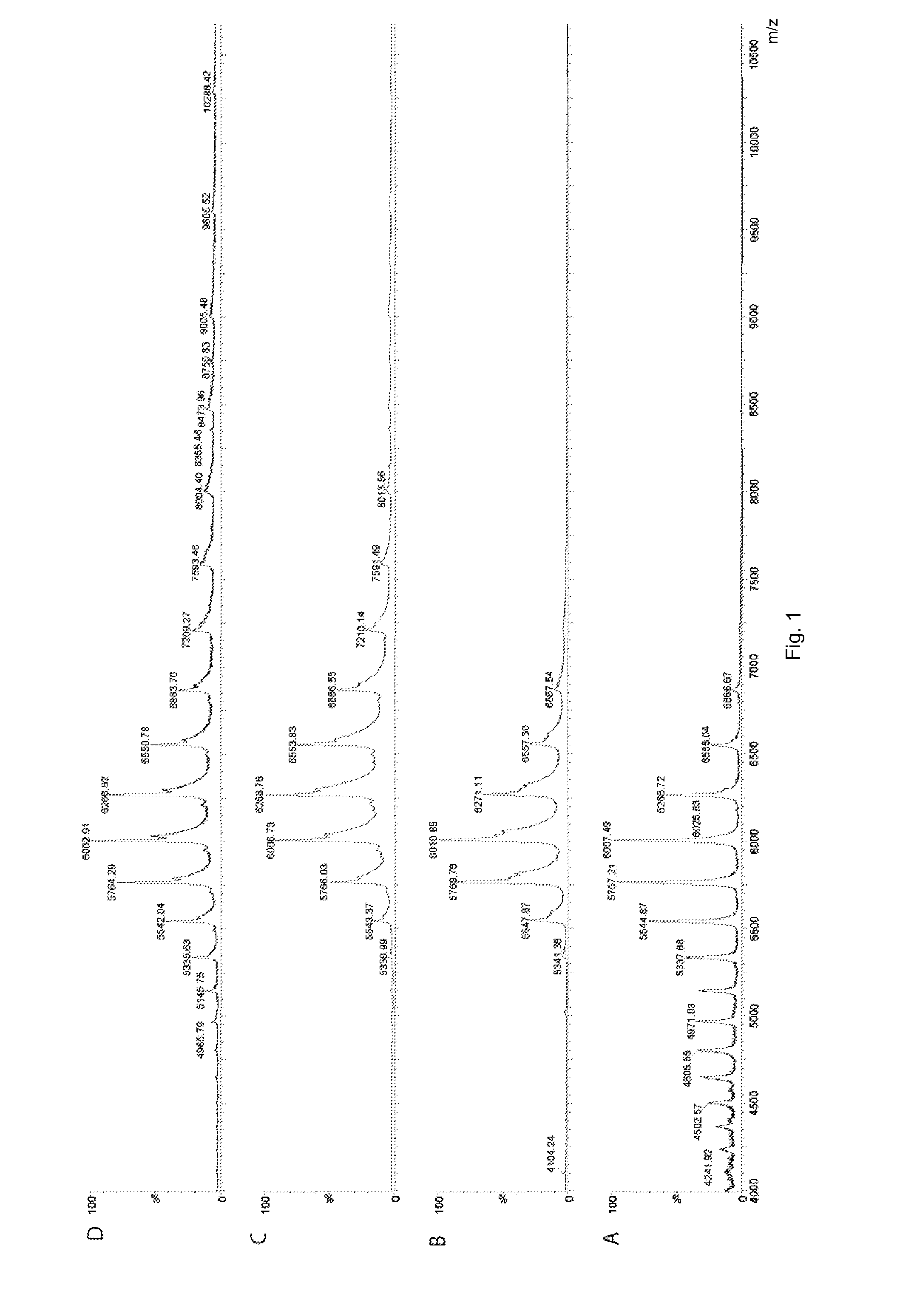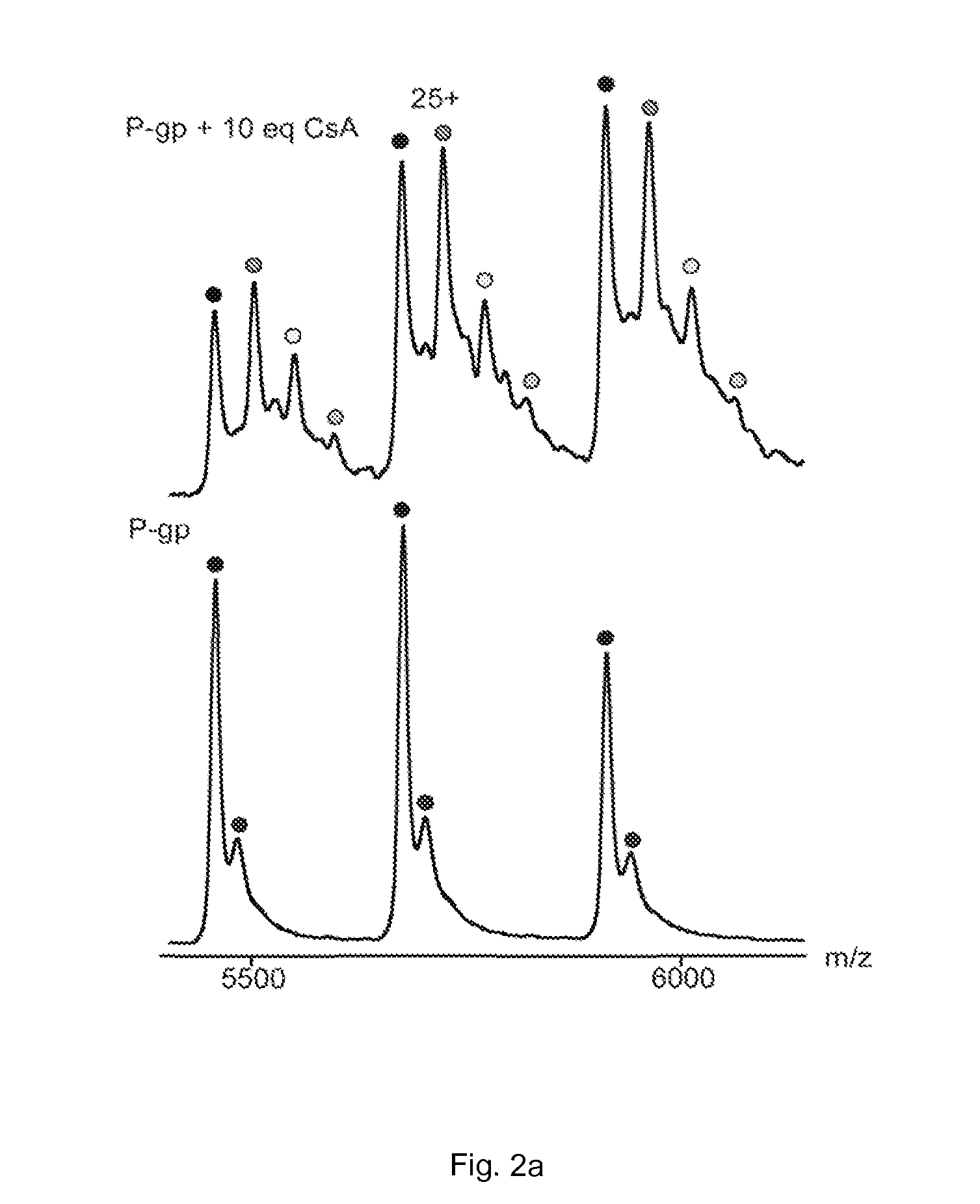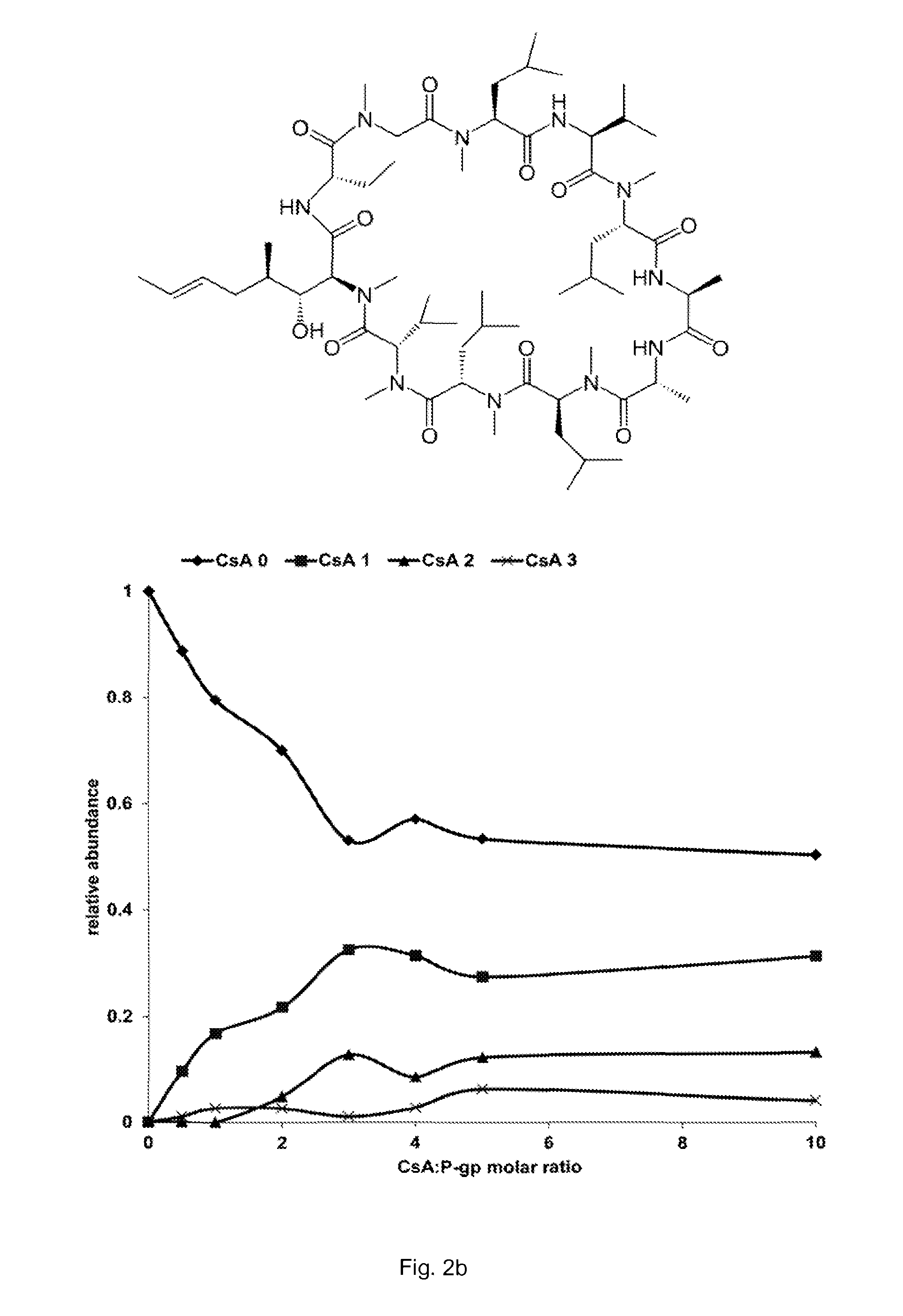Detection of membrane protein-therapeutic agent complexes by mass spectrometry
a membrane protein and complex technology, applied in the field of detection of complexes comprising membrane proteins bound to therapeutic agents, can solve the problems of affecting the delivery of targeted drugs, affecting the detection efficiency of targeted drugs, so as to achieve the effect of less sampl
- Summary
- Abstract
- Description
- Claims
- Application Information
AI Technical Summary
Benefits of technology
Problems solved by technology
Method used
Image
Examples
example 1
[0048]MS and IM-MS data of a membrane transporter, P-gp, binding to different drugs were acquired. The drugs included: two stereoisomers of a cyclic peptide inhibitor (QZ59Se, SSS; and QZ59Se, RRR); a further inhibitor (HT-55); and two activators (HT-35 and HT-122).
[0049]P-glycoprotein (P-gp) was expressed and purified as reported previously (Aller et al, Science, 2009, 323, 1718-1722). In this method, P-gp was expressed in P. pastoris strain and purified as a his-tagged protein from the membranes solubilised with Triton X-100. Buffer was exchanged by washing with buffer containing 20 mM imidazole, 0.04% sodium cholate and 0.0675% β-DDM. The protein was concentrated, subjected to gel filtration chromatography and assayed for purity by SDS-PAGE.
[0050]An aliquot (30 μl) of mouse P-gp solution (9 mg / ml) in 0.07% β-DDM, 0.04% sodium cholate, 100 mM NaCl, 0.2 mM TCEP, 20 mM Hepes, pH 7.5 was buffer-exchanged using a membrane filter and diluted 3-fold in 300 mM ammonium acetate, pH 7.5. S...
example 2
[0053]A similar experiment was performed to detect binding between cyclosporin A and P-gp. Cyclosporin A (CsA; 1202.6 Da) is an immunosuppressant and antifungal antibiotic known to inhibit P-gp ATPase activity with an IC50 of 3.4 μM. In addition, the concomitant binding of nucleotides, lipid and CsA to P-gp was also detected.
[0054]Materials and Methods
[0055]His-tagged P-glycoprotein was expressed in P.pastoris and purified according to a protocol described previously (see Aller et al, supra). Lipids were purchased from Avanti Polar Lipids. Cyclosporin A, ammonium acetate, ATP and ATPγS were purchased from Sigma-Aldrich.
[0056]Before analysis, P-gp was buffer exchanged into 200 mM ammonium acetate pH 7 supplemented with 0.02% n-dodecyl-β-D-maltoside (DDM), using micro BioSpin-6 devices (Bio-Rad). Lipids were first prepared at 2 mM in chloroform and then diluted to 20 μM in 200 mM ammonium acetate pH 7 supplemented with 0.02% DDM. Cyclosporin was first dissolved at 8 mM in methanol and...
PUM
 Login to View More
Login to View More Abstract
Description
Claims
Application Information
 Login to View More
Login to View More - R&D
- Intellectual Property
- Life Sciences
- Materials
- Tech Scout
- Unparalleled Data Quality
- Higher Quality Content
- 60% Fewer Hallucinations
Browse by: Latest US Patents, China's latest patents, Technical Efficacy Thesaurus, Application Domain, Technology Topic, Popular Technical Reports.
© 2025 PatSnap. All rights reserved.Legal|Privacy policy|Modern Slavery Act Transparency Statement|Sitemap|About US| Contact US: help@patsnap.com



